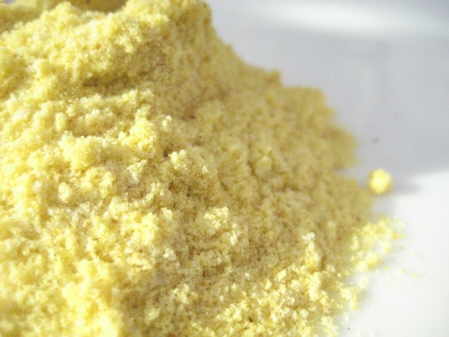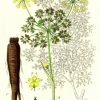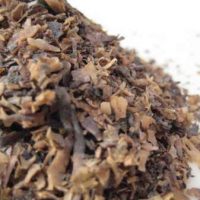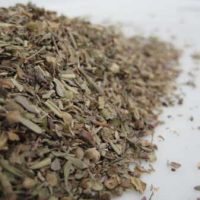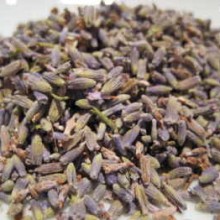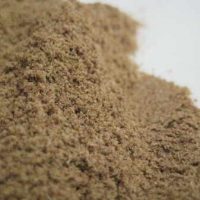Asafoetida Spice (Ferula asafoetida) is also known as Devil’s Dung, Stinking Gum, Asant, Food of the Gods, Hing and Giant Fennel.
Please Note:-
As a spice used in cooking it is generally blended with Fenugreek, equally ground, as Asafoetida is just too strong on its own.
The pure Asafoetida Gum itself, which is not generally used in cooking but in medicinal applications, perfume and incense or Asafoetida essential oil
It is a species of Ferula native to Iran. It is a herbaceous perennial plant growing to 2 m tall, with stout, hollow, somewhat succulent stems 5-8 cm diameter at the base of the plant. The leaves are 30-40 cm long, tripinnate or even more finely divided, with a stout basal sheath clasping the stem. The flowers are yellow, produced in large compound umbels.
Asafoetida’s English and scientific name is derived from the Persian word for resin (asa) and Latin foetida, which refers to its strong sulfurous odour.
Its pungent odour has resulted in its being called by many unpleasant names; thus in French it is known (among other names) as Merde du Diable (Devil’s faeces); in some dialects of English too it was known as Devil’s Dung, and equivalent names can be found in most Germanic languages (e.g. German Teufelsdreck), also in Afrikaans as Duiwelsdrek and also Finnish Pirunpaska or Pirunpihka. In Turkish, the Devil’s Herb. In many of the northern Indian languages (Hindi, Urdu, Gujarati, Punjabi, Marathi, Bengali) it is known as Hing or “Heeng”. A related name occurs in many Dravidian languages (e.g. Telugu Inguva, Kannada Ingu), but Tamil perungaayam and Malayalam kaayam come from a different root.
Traditional Uses for Asafoetida Spice:-
The spice is used as a digestive aid, in food as a condiment and in pickles.
Its odour is so strong that it must be stored in airtight containers; otherwise the aroma, which is nauseating in quantities, will contaminate other spices stored nearby. However, its smell becomes much milder in cooking and presents an onion-like taste. Some claim that the use of Asafoetida in a marinade or coating for fried fish eliminates the strong smell usually left behind after frying. In India, it is used especially by the trader caste of the Hindus and by adherents of Jainism, who are not allowed to eat onions. It is mainly grown in Iran, Afghanistan and Kashmir.
Asafoetida has certain medicinal uses and is most commonly used as a digestive aid. It is reputed to lessen flatulence and is often added to lentil or eggplant dishes in small quantities. It is also said to be helpful in cases of asthma and bronchitis.
A folk tradition remedy for children’s colds: it is mixed into a foul-smelling paste and hung in a bag around the afflicted child’s neck. An “asfiddity bag” around the neck was a common preventative for colds and flu in West Virginia in the early 1900’s.
In Thailand it is used to aid babies’ digestion and is smeared on the child’s stomach in an alcohol tincture known as “mahahing”. John C Duval reported in 1936 that the odour of assfoetida is attractive to the wolf, a matter of common knowledge, he says, along the Texas/Mexican border.

